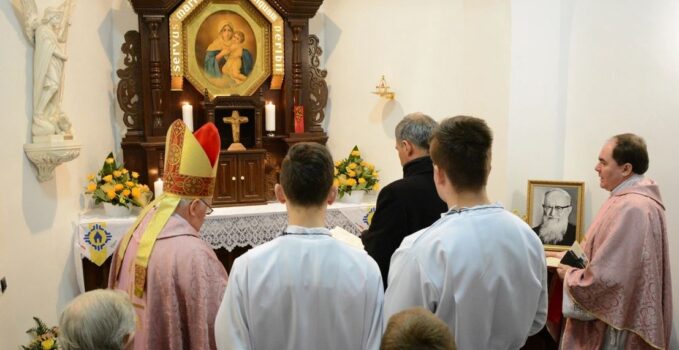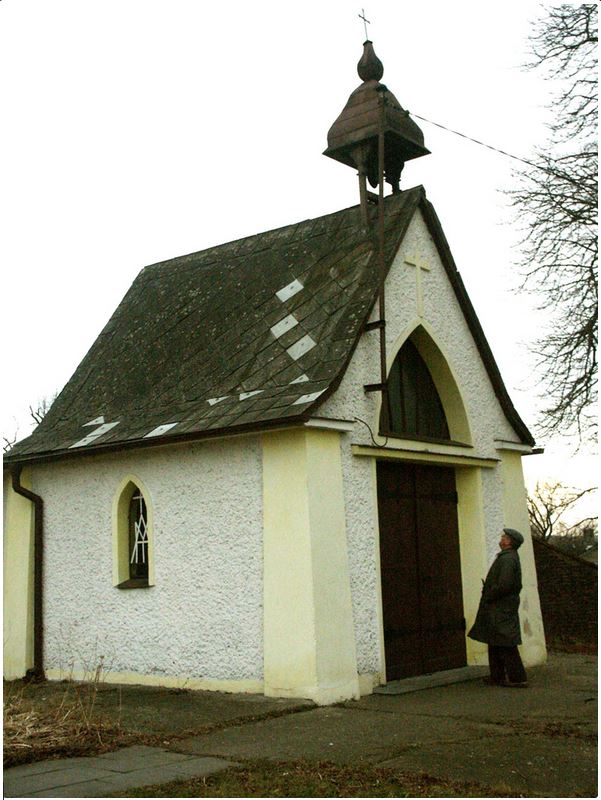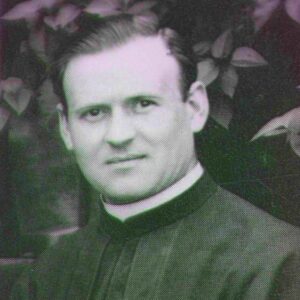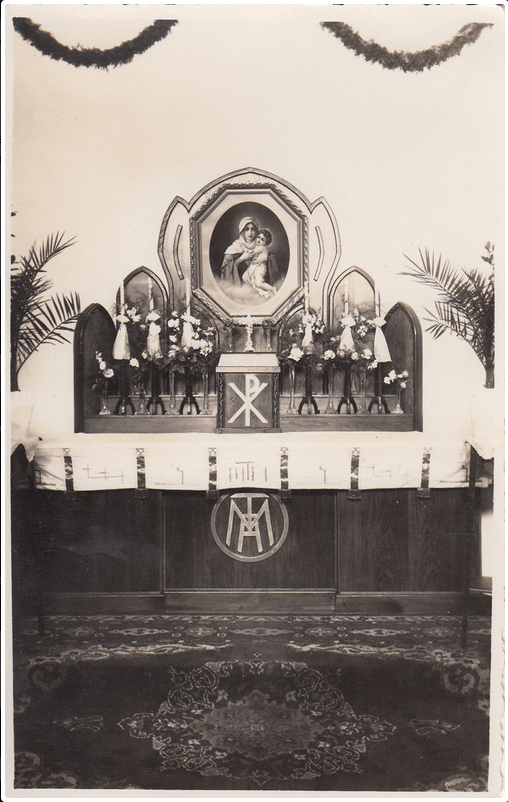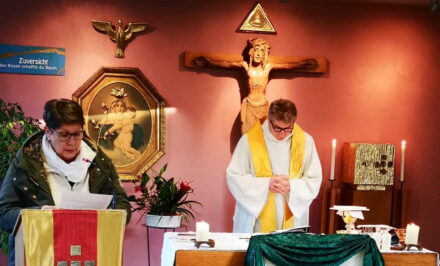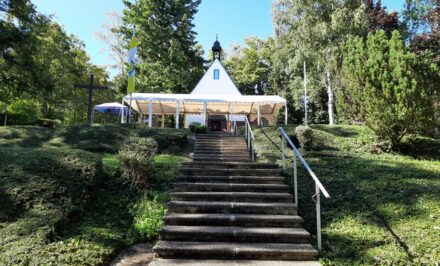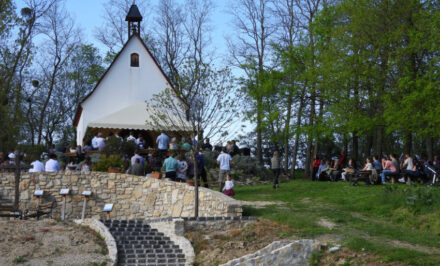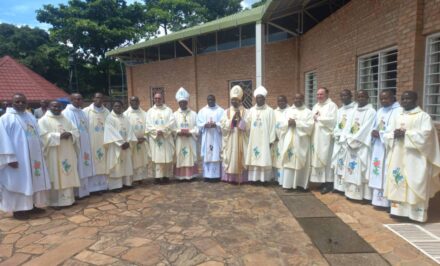POLAND, Maria Fischer •
This October marks 80 years since the first daughter shrine, the first faithful replica of the original shrine, was blessed. This Sunday, July 23, 2023, however, it will already be 90 years since the blessing of a chapel that looks confusingly like the Original Shrine. It stands in Kietrz, formerly Kascher, in Upper Silesia, and goes back to Blessed Father Richard Henkes of the Pallottine community. So discovered today, July 18, in an article in the news portal www.opole.gosc.pl. —
The celebration of the 90th anniversary of this shrine will begin with a Holy Mass at 4 p.m. in the parish church of St. Thomas the Apostle in Kietrz. The Eucharist will be presided by Archbishop Adrian Galbas SAC of Katowice, Commissioner of the Polish Episcopal Conference for the Schoenstatt Movement in Poland. During this celebration Mary will be crowned “Queen of Reconciliation”.
Built on the initiative of Fr. Richard Henkes
“The Schoenstatt Chapel, built in 1933 on the initiative of Blessed Father Richard Henkes SAC opposite the Pallottine School in Kietrz (then Katscher), was modeled on the chapel in Schoenstatt. It is probably the first building in the world modeled on the Original Shrine of the Schoenstatt Movement, because the idea of building so-called daughter shrines exactly on the model of the Original Shrine did not arise until 10 years later, in 1943, when the first daughter shrine was built in Uruguay,” Anna Kwaśnicka’s article reads.
Father Kentenich in Poland
On the occasion of the 100th anniversary of the Schoenstatt Movement, the places where Father Joseph Kentenich stayed and worked apostolically were commemorated in Poland. The cover photo is from that time.
Yet Fr. Kentenich never visited Poland; the present borders of Poland include large areas that belonged to Germany until the end of World War II. The so-called “Polish Westward Shift” was agreed upon by the Allies at the Teheran Conference in November 1943. Poland’s national borders were thereby shifted westward; what was then eastern Poland was awarded to the Soviet Union, and Poland was to be compensated for this with the eastern German territories. The Polish population was to free the eastern Polish territories for Russians and be resettled in the German eastern territories. The Germans were to vacate the place for the eastern Poles who had been expelled for their part and were to be forcibly expelled to the rest of Germany. What was a humanitarian catastrophe for millions of Poles and Germans in 1946/7 is at the same time the story of a Schoenstatt in the territory of today’s Poland that was formed around the Pallottine Fathers’ branches in the 1930s.
And so, what the Polish Schoenstatters discovered with joy is true: Fr. Kentenich prayed in this chapel during his visits in 1933, 1934 and 1936.
After the Pallottines were expelled from Kietrz by the Red Army, the pastoral care of the community was taken over by diocesan priests, the article continues.
The chapel survived thanks to local Schoenstatt families and the Institute of Our Lady of Schoenstatt. From the 1960s to the 1980s, members of the institute held their course consecrations there.
Renovation
Fr. Stefan Pieczka, who became the parish priest in Kietrz in 1962, together with the Secular Institute of Our Lady of Schoenstatt, undertook the renovation of the chapel. It was equipped step by step according to the model of the Original Shrine in Schoenstatt, with a new picture of the Mother Thrice Admirable of Schoenstatt, the statue of St. Michael the Archangel, the Unity Cross, the Eternal Light and the Father Symbol.
The chapel in Kietrz was the center of the Polish Schoenstatt Movement in Silesia until the 1980s. When the shrines in Winow (1988) and Zabrze-Rokitnica (2000) were built, it was almost forgotten. But only almost.
Reconciliation, gratitude, respect … and the war in Ukraine
“Among the members of the Schoenstatt Movement, the idea arose to crown the image of Mary in the chapel in Kietrz as the Queen of Reconciliation, as an expression of gratitude to Mary, Mother Thrice Admirable, for her 90-year presence in this country and of respect for the spiritual roots of Polish Schoenstatt that Mary had planted here even before the war,” the article says. And then the author quotes a representative of the Schoenstatt Movement:
“We would like to crown Mary in the picture from the chapel in Kietrz as Queen of Reconciliation, because Blessed Richard Henkes SAC, to whom we owe the construction of this chapel, was in his lifetime and is now in heaven a great champion of reconciliation and a servant of truth. We are in a difficult time of war in Ukraine. The Poles who were resettled in Kietrz in 1945 are from this area. On their land, the land of their fathers and mothers, the land of their roots, the war is now taking place and innocent people are dying. We are in a difficult time. We need peace. In this Coronation, we ask for reconciliation and peace in the world through Mary’s intercession.”
Link to detailed original article (Polish).
With material from pater-richard-henkes.de/
Original: German. Translation: Maria Fischer @schoenstatt.org


